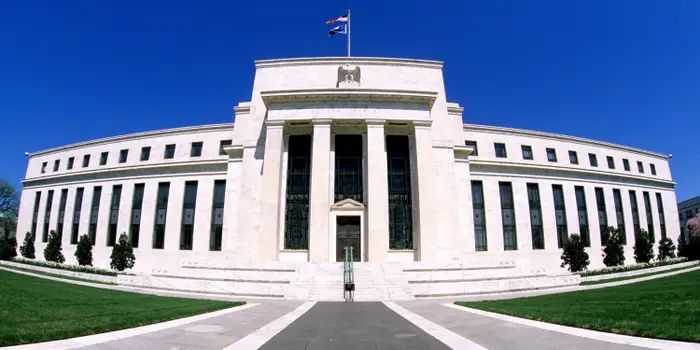The COVID-19 pandemic continues to weigh heavily on economic activity and labor markets in the United States and around the world, even as the ongoing vaccination campaigns offer hope for a return to more normal conditions later this year. While unprecedented fiscal and monetary stimulus and a relaxation of rigorous social-distancing restrictions supported a rapid rebound in the U.S. labor market last summer, the pace of gains has slowed and employment remains well below pre-pandemic levels. In addition, weak aggregate demand and low oil prices have held down consumer price inflation. In this challenging environment, the Federal Open Market Committee (FOMC) has held its policy rate near zero and has continued to purchase Treasury securities and agency mortgage-backed securities to support the economic recovery. These measures, along with the Committee’s strong guidance on interest rates and the balance sheet, will ensure that monetary policy will continue to deliver powerful support to the economy until the recovery is complete.
Economic and Financial Developments
Economic activity and the labor market. The initial wave of COVID-19 infections led to a historic contraction in economic activity as a result of both mandatory restrictions and voluntary changes in behavior by households and businesses. The level of gross domestic product (GDP) fell a cumulative 10 percent over the first half of 2020, and the measured unemployment rate spiked to a post–World War II high of 14.8 percent in April. As mandatory restrictions were subsequently relaxed and households and firms adapted to pandemic conditions, many sectors of the economy recovered rapidly and unemployment fell back. Momentum slowed substantially in the late fall and early winter, however, as spending on many services contracted again amid a worsening of the pandemic. All told, GDP is currently estimated to have declined 2.5 percent over the four quarters of last year and payroll employment in January was almost 10 million jobs below pre-pandemic levels, while the unemployment rate remained elevated at 6.3 percent and the labor force participation rate was severely depressed. Job losses have been most severe and unemployment remains particularly elevated among Hispanics, African Americans, and other minority groups as well as those who hold lower-wage jobs.
Inflation. After declining sharply as the pandemic struck, consumer price inflation rebounded along with economic activity, but inflation remains below pre-COVID levels and the FOMC’s longer-run objective of 2 percent. The 12-month measure of PCE (personal consumption expenditures) inflation was 1.3 percent in December, while the measure that excludes food and energy items—so-called core inflation, which is typically less volatile than total inflation—was 1.5 percent. Both total and core inflation were held down in part by prices for services adversely affected by the pandemic, and indicators of longer-run inflation expectations are now at similar levels to those seen in recent years.
Financial conditions. Financial conditions have improved notably since the spring of last year and remain generally accommodative. Low interest rates, the Federal Reserve’s asset purchases, the establishment of emergency lending facilities, and other extraordinary actions, together with fiscal policy, continued to support the flow of credit in the economy and smooth market functioning. The nominal Treasury yield curve steepened and equity prices continued to increase steadily in the second half of last year as concerns over the resurgence in COVID-19 cases appeared to have been outweighed by positive news about vaccine prospects and expectations of further fiscal support. Spreads of yields on corporate bonds over those on comparable-maturity Treasury securities narrowed significantly, partly because the credit quality of firms improved and market functioning remained stable. Mortgage rates for households remain near historical lows. However, financing conditions remain relatively tight for households with low credit scores and for small businesses.
Financial stability. While some financial vulnerabilities have increased since the start of the pandemic, the institutions at the core of the financial system remain resilient. Asset valuation pressures have returned to or exceeded pre-pandemic levels in most markets, including in equity, corporate bond, and residential real estate markets. Although government programs have supported business and household incomes, some businesses and households have become more vulnerable to shocks, as earnings have fallen and borrowing has risen. Strong capital positions before the pandemic helped banks absorb large losses related to the pandemic. Financial institutions, however, may experience additional losses as a result of rising defaults in the coming years, and long-standing vulnerabilities at money market mutual funds and open-end investment funds remain unaddressed. Although some facilities established by the Federal Reserve in the wake of the pandemic have expired, those remaining continue to serve as important backstops against further stress. (See the box „Developments Related to Financial Stability” in Part 1.)
International developments. Mirroring the United States, economic activity abroad bounced back last summer after the spread of the virus moderated and restrictions eased. Subsequent infections and renewed restrictions have again depressed economic activity, however. Relative to the spring, the current slowdown in economic activity has been less dramatic. Fiscal and monetary policies continue to be supportive, and people have adapted to containment measures that have often been less stringent than earlier.
Despite the resurgence of the pandemic in many economies, financial markets abroad have recovered since the spring, buoyed by continued strong fiscal and monetary policy support and the start of vaccination campaigns in many countries. With the abatement of financial stress, the broad dollar has depreciated, more than reversing its appreciation at the onset of the pandemic. On balance, global equity prices have recovered and sovereign credit spreads in emerging market economies and in the European periphery have narrowed. In major advanced economies, sovereign yields remained near historical low levels amid continued monetary policy accommodation.
Monetary Policy
Review of the strategic framework for monetary policy. The Federal Reserve concluded the review of its strategic framework for monetary policy in the second half of 2020. The review was motivated by changes in the U.S. economy that affect monetary policy, including the global decline in the general level of interest rates and the reduced sensitivity of inflation to labor market tightness. In August, the FOMC issued a revised Statement on Longer-Run Goals and Monetary Policy Strategy.1 The revised statement acknowledges the changes in the economy over recent decades and articulates how policymakers are taking these changes into account in conducting monetary policy. In the revised statement, the Committee indicates that it aims to attain its statutory goals by seeking to eliminate shortfalls from maximum employment—a broad-based and inclusive goal—and achieve inflation that averages 2 percent over time. Achieving inflation that averages 2 percent over time helps ensure that longer-term inflation expectations remain well anchored at the FOMC’s longer-run 2 percent objective. Hence, following periods when inflation has been running persistently below 2 percent, appropriate monetary policy will likely aim to achieve inflation moderately above 2 percent for some time. (See the box „The FOMC’s Revised Statement on Longer-Run Goals and Monetary Policy Strategy” in Part 2.)
In addition, in December the FOMC introduced two changes to the Summary of Economic Projections (SEP) intended to enhance the information provided to the public. First, the release of the full set of SEP exhibits was accelerated by three weeks, from the publication of the minutes three weeks after the end of an FOMC meeting to the day of the policy decision, the second day of an FOMC meeting. Second, new charts were included that display how FOMC participants’ assessments of uncertainties and risks have evolved over time.
Interest rate policy. In light of the effects of the continuing public health crisis on the economy and the associated risks to the outlook, the FOMC has maintained the target range for the federal funds rate at 0 to 1/4 percent since last March. In pursuing the strategy outlined in its revised statement, the Committee noted that it expects it will be appropriate to maintain this target range until labor market conditions have reached levels consistent with the Committee’s assessments of maximum employment and inflation has risen to 2 percent and is on track to moderately exceed 2 percent for some time.
Balance sheet policy. With the federal funds rate near zero, the Federal Reserve has also continued to undertake asset purchases to increase its holdings of Treasury securities by $80 billion per month and its holdings of agency mortgage-backed securities by $40 billion per month. These purchases help foster smooth market functioning and accommodative financial conditions, thereby supporting the flow of credit to households and businesses. The Committee expects these purchases to continue at least at this pace until substantial further progress has been made toward its maximum-employment and price-stability goals.
In assessing the appropriate stance of monetary policy, the Committee will continue to monitor the implications of incoming information for the economic outlook. The Committee is prepared to adjust the stance of monetary policy as appropriate if risks emerge that could impede the attainment of the Committee’s goals.
Special Topics
Disparities in job loss. The COVID-19 crisis has exacerbated pre-existing disparities in labor market outcomes across job types and demographic groups. Job losses last spring were disproportionately severe among lower-wage workers, less-educated workers, and racial and ethnic minorities, as in previous recessions, but also among women, in contrast to previous recessions. While all groups have experienced at least a partial recovery in employment rates since April 2020, the shortfall in employment remains especially large for lower-wage workers and for Hispanics, African Americans, and other minority groups, and the additional childcare burdens resulting from school closures have weighed more heavily on women’s labor force participation than on men’s labor force participation. (See the box „Disparities in Job Loss during the Pandemic” in Part 1.)
High-frequency indicators. The unprecedented magnitude, speed, and nature of the COVID-19 shock to the economy rendered traditional statistics insufficient for monitoring economic activity in a timely manner. As a result, policymakers turned to nontraditional high-frequency indicators of activity, especially for the labor market and consumer spending. These indicators presented a more timely and granular picture of the drop and subsequent rebound in economic activity last spring. The most recent readings obtained from those indicators suggest that economic activity began to edge up again in January, likely reflecting in part the disbursement of additional stimulus payments to households. (See the box „Monitoring Economic Activity with Nontraditional High-Frequency Indicators” in Part 1.)
Monetary policy rules. Simple monetary policy rules, which relate a policy interest rate to a small number of other economic variables, can provide useful guidance to policymakers. This discussion presents the policy rate prescriptions from a number of rules that have received attention in the research literature, many of which mechanically prescribe raising the federal funds rate as employment rises above estimates of its longer-run level. A rule that instead responds only to shortfalls of employment from assessments of its maximum level is featured to illustrate one aspect of the FOMC’s revised approach to policy, as described in the revised Statement on Longer-Run Goals and Monetary Policy Strategy. (See the box „Monetary Policy Rules and Shortfalls from Maximum Employment” in Part 2.)






COMMENTS